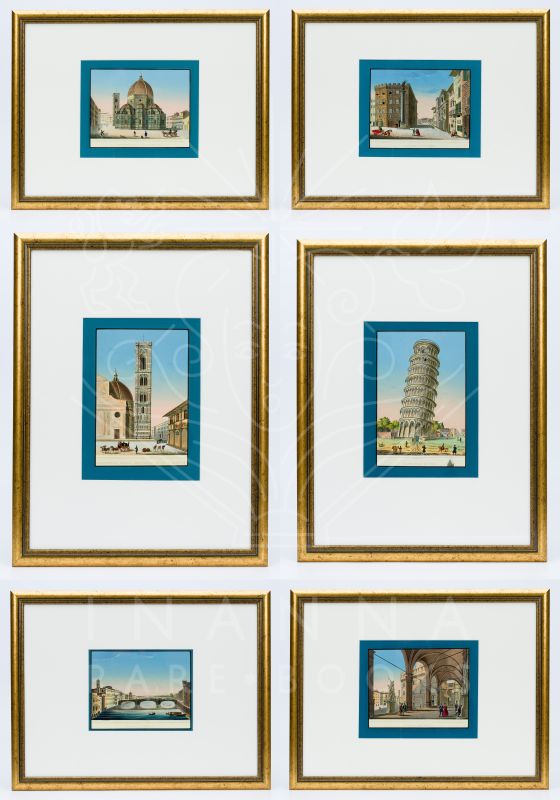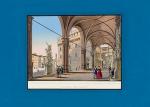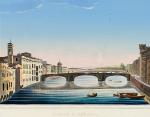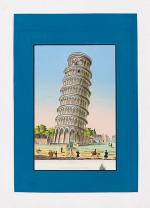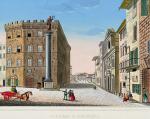Carocci, Collection of six stunning, early 19th-century gouache-aquatints of Flo
Collection of six stunning, early 19th-century gouache-aquatints of Florence and Pisa including a rare segment showing a Funerary Procession in front of Giotto’s Campanile, part of the complex of buildings that make up Florence Cathedral on the Piazza del Duomo in Florence, Italy. These very able and fantastically hand-coloured, original artworks, represent the peak of high-quality souvenirs for the European Traveller on their Grand Tour. [Loggia dei Lanzi / Cattedrale di Firenze / Piazza S. Trinita / Campanile Della Cattedrale di Firenze / Ponte S. Trinita / Campanile Di Pisa].
Original Aquatint (hand-applied water-colouring over copper engraving). Florence / Pisa, [c.1820]. Plate Sizes vary: 31 cm x 22.1 cm. Sheet Sizes vary: 34.6 cm x 26.5 cm. Original Gouache-Aquatint (hand-applied water-colouring over copper engraving). Florence/Pisa, [c.1820]. Plate-Sizes vary: c. 31 cm x 22.1 cm. Sheet Sizes vary: c. 34.6 cm x 26.5 cm. Besides some smaller damages to the Ponte S. Trinita-artwork in very good, actually stunning, condition. Clean, crisp and brightly coloured. All of these artworks are beautifully framed and the price includes worldwide free shipping per UPS – courier.
The “Longing for Italy”, the “Italiensehnsucht” of the german – speaking countries, was forced by Johann Wolfgang von Goethe’s “Italian Travels” and sent scores of young and old to Italy’s shores, countryside and cities.
The Grand Tour was the 17th- and 18th-century custom of a traditional trip of Europe undertaken by upper-class young European men and women of sufficient means and rank (typically accompanied by a chaperone, such as a family member) when they had come of age (about 21 years old).
The custom – which flourished from about 1660 until the advent of large-scale rail transport in the 1840s and was associated with a standard itinerary – served as an educational rite of passage. Though the Grand Tour was primarily associated with the British nobility and wealthy landed gentry, similar trips were made by wealthy young men of other Protestant Northern European nations, and, from the second half of the 18th century, by some South and North Americans.
By the mid 18th century, the Grand Tour had become a regular feature of aristocratic education in Central Europe as well, although it was restricted to the higher nobility. The tradition declined as enthusiasm for neo-classical culture waned, and with the advent of accessible rail and steamship travel. (Wikipedia)
- Keywords: 18th Century · 18th Century – Rare · 19th Century · 19th Century – Rare · Aquatint · Art – Rare · Catalogue Four – International Art · Catalogue Summer 2020 · Decorative Art · Decorative Original Graphic · Florence · Funerary Procession Campanile Firenze · Gift Ideas Rare · Grand Tour of Europe · Italian History – Rare · Italiensehnsucht · Italy · New Arrivals · Nostalgie Italienne · Original Art · Original Artwork Rare · Original Decorative Art Rare · Original Engraving · Original Engraving Italy · Original Gouache · Pisa · Renaissance · Sepulchral Culture · Sepulkralkultur · Travel Italy – Rare
- Inventory Number: 100050AG
EUR 3.800,--
© 2025 Inanna Rare Books Ltd. | Powered by HESCOM-Software




